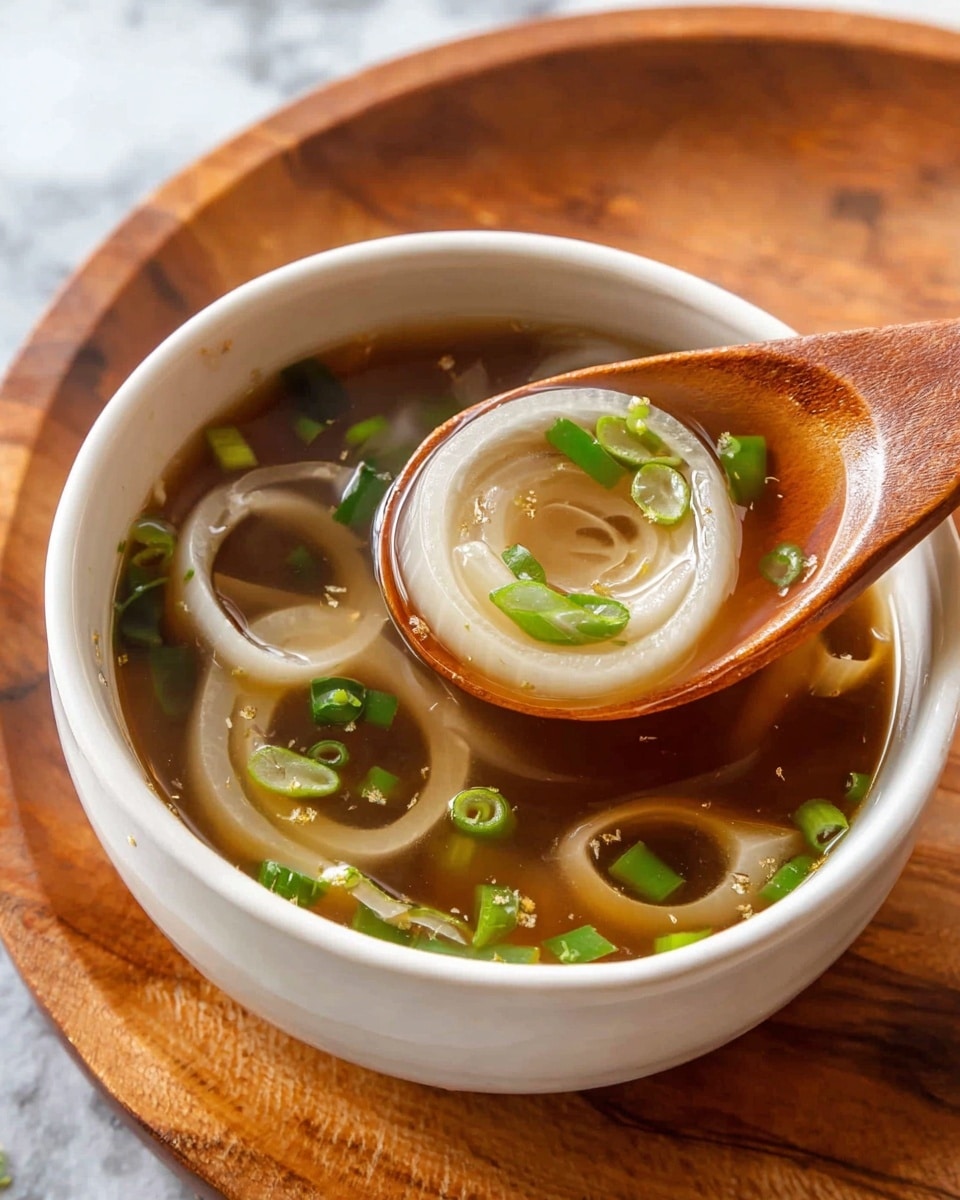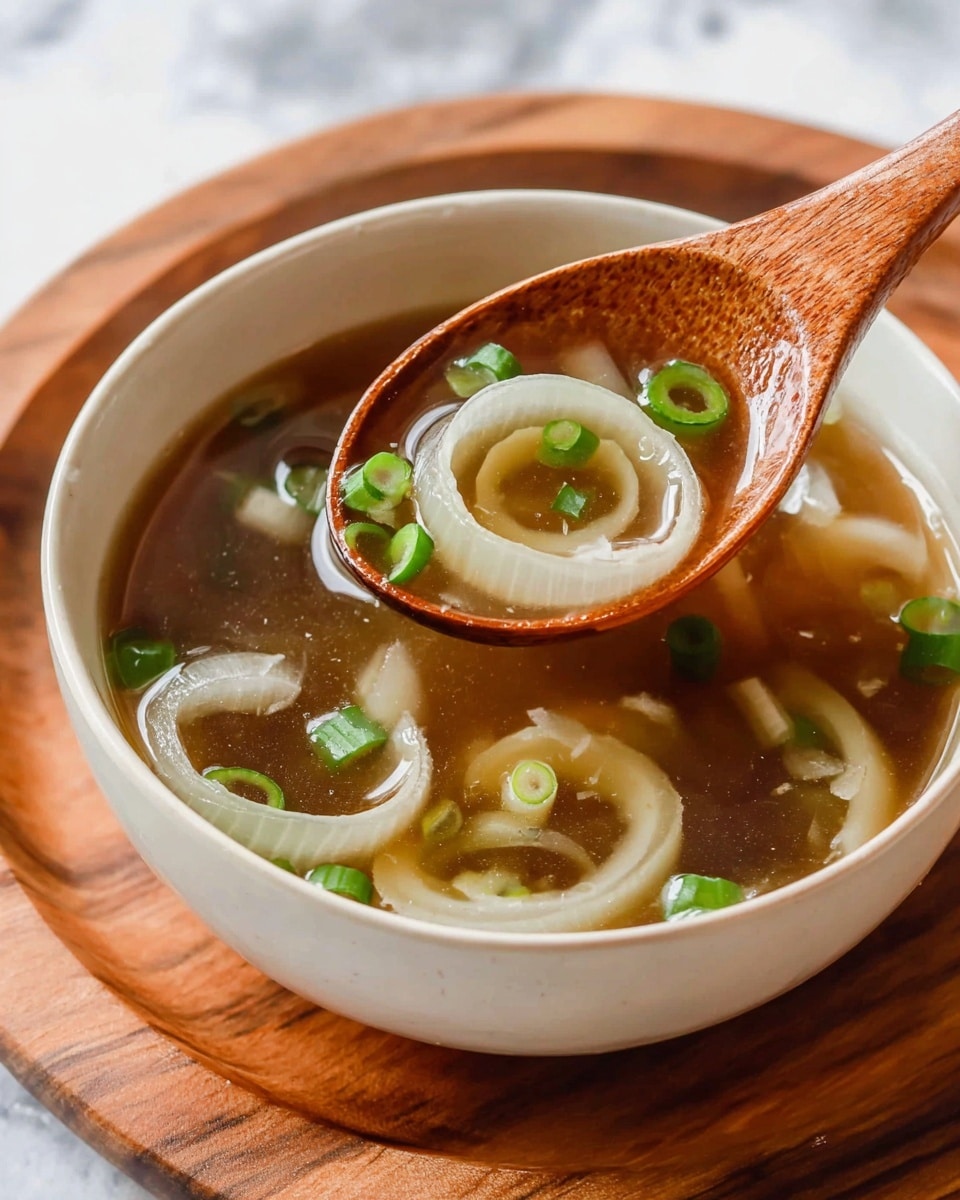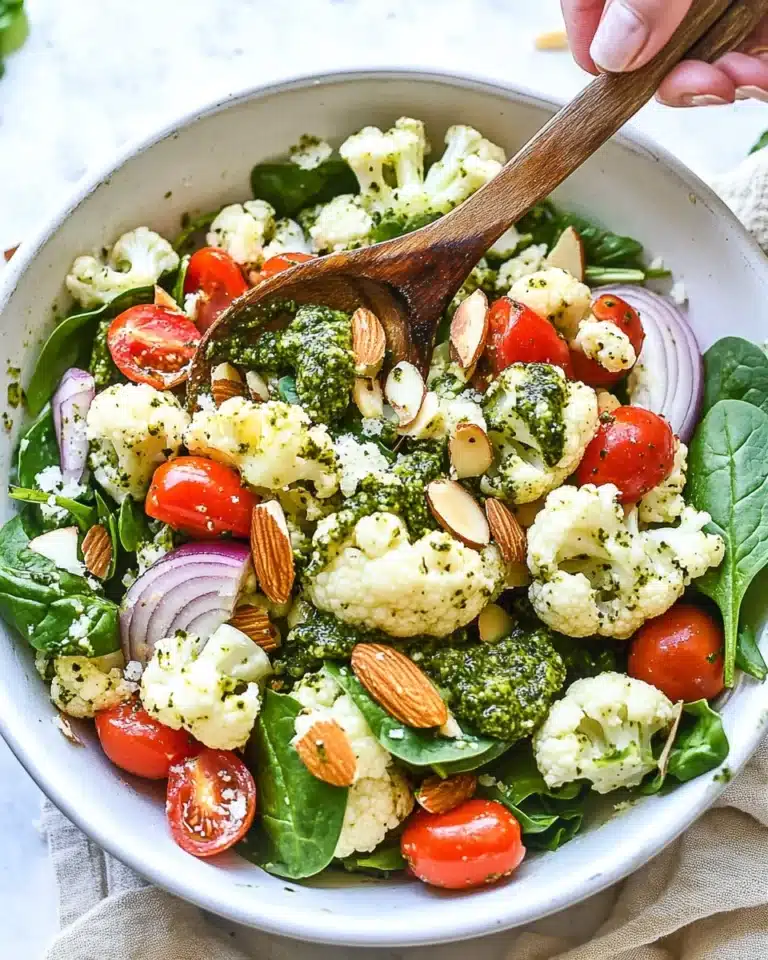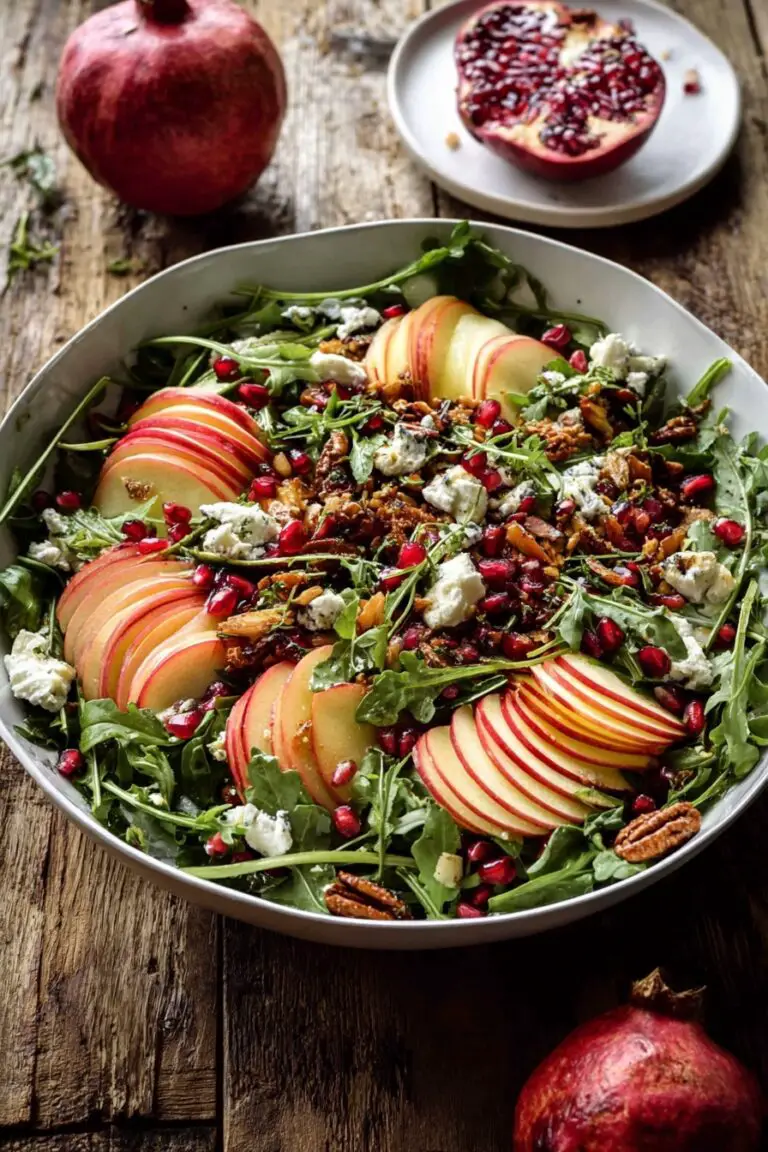If you’re craving a comforting yet light soup that’s packed with umami and vibrant flavors, you’ve got to try this Japanese Onion Soup with Mushrooms and Seasonal Vegetables Recipe. I absolutely love how the sweet caramelized onions meld beautifully with earthy mushrooms and fresh seasonal veggies, making it a perfect dish no matter the time of year. Trust me, whether you’re a soup newbie or a seasoned pro, this recipe is fan-freaking-tastic and so satisfying!
Why You’ll Love This Recipe
- Rich Umami Flavor: The combination of caramelized onions and mushrooms creates a broth with a deep, satisfying taste.
- Seasonal Vegetable Flexibility: You can swap veggies to match what’s fresh and available, keeping it versatile and fresh.
- Simple Yet Elegant: Easy to make but tastes like you spent hours in the kitchen—perfect for weeknights or impressing guests.
- Healthful and Vegan-Friendly: Packed with veggies and no animal products, it’s perfect for clean eating without skimping on flavor.
Ingredients You’ll Need
This Japanese Onion Soup with Mushrooms and Seasonal Vegetables Recipe comes together with simple, fresh ingredients that harmonize perfectly. When shopping, look for firm onions and fresh mushrooms to get the best aroma and flavor from your soup.
- Minced garlic: Fresh garlic gives an aromatic base that brightens up all the flavors.
- Freshly grated ginger: Adds a subtle zing and warmth, essential in Japanese-inspired dishes.
- Finely chopped onions: The star of the show—fine chopping helps them caramelize evenly and melt into the broth.
- Peeled and diced carrots: Adds sweetness and body; choose firm carrots without cracks.
- Diced celery stalks: Brings a gentle freshness and a slight crunch.
- Vegetable stock: I recommend homemade or a high-quality organic stock for a rich base.
- Toasted sesame oil: Just a touch for that subtle nutty depth unique to Japanese cooking.
- Thinly sliced button mushrooms: Absorb the broth’s flavor beautifully—baby bellas or shiitake work great too.
- Chopped green onions (scallions): Freshness and a bit of crispness to finish the soup off.
- Sea salt and freshly ground black pepper: To balance and season perfectly according to taste.
- Rice vinegar: Brings light acidity that lifts all the flavors up.
- Crushed red pepper flakes: Just enough heat to add warmth without overwhelming.
- Soy sauce (optional): Adds umami depth, but you can skip if you want a lighter taste.
- Sriracha sauce (optional): For that spicy kick if you love some heat.
Variations
I love to tweak this Japanese Onion Soup with Mushrooms and Seasonal Vegetables Recipe depending on what I have in my fridge or mood I’m in. It’s really forgiving and responds well to personalization!
- Add Miso Paste: I’ve found a tablespoon of white miso stirred in mid-simmer gives the broth an incredibly rich umami boost.
- Swap Seasonal Veggies: In spring, I throw in asparagus tips or snap peas; in fall, a bit of pumpkin or sweet potato makes it cozy.
- Make it Heartier: For a more filling soup, add cooked tofu cubes or some soba noodles right before serving.
- Spice Level Adjustment: Play with the amount of crushed red pepper or sriracha to suit your heat preference.
How to Make Japanese Onion Soup with Mushrooms and Seasonal Vegetables Recipe
Step 1: Prepare the Vegetables with Care
The key to nailing this recipe is starting with well-prepared veggies. Finely chop the onions—this not only speeds up caramelization but makes your soup silky. Peel and dice carrots uniformly so they cook evenly, and dice the celery to match. Having all ingredients prepped upfront helps everything run smoothly when the heat is on.
Step 2: Slowly Sauté Onions for Rich Sweetness
Heat a drizzle of toasted sesame oil over medium heat, then add the finely chopped onions. Stir gently and let them sweat for about 10 minutes until translucent and sweet-smelling. Adding the minced garlic and grated ginger after the onions soften ensures they cook without burning and infuse the broth with a beautiful aroma.
Step 3: Add Carrots and Celery, Let Flavors Meld
Once the onions are ready, stir in the carrots and celery. Cook for about 5 minutes, stirring occasionally, until they brighten and get slightly tender. This builds layers of flavor that really shine through later, so don’t rush it.
Step 4: Pour in the Vegetable Stock and Bring to a Gentle Boil
Now pour in your vegetable stock and turn up the heat just enough to bring it to a gentle boil. You don’t want it aggressively bubbling—just a light simmer so everything melds perfectly. This step breathes life into the soup.
Step 5: Add Mushrooms and Seasonings
Once boiling, add your thinly sliced mushrooms—they soak up all the flavorful broth and add earthy depth. Then stir in rice vinegar, soy sauce (if using), and crushed red pepper flakes. I usually start with a little, then adjust at the end after tasting, so you won’t overpower the delicate balance.
Step 6: Simmer Slowly to Develop Flavor
Reduce heat to low and let the soup simmer for about 20 minutes. I like to taste it halfway through to check seasoning and add salt or pepper as needed. Slow simmering allows the flavors to deepen and the veggies to soften perfectly—patience here makes the difference!
Step 7: Finish with Green Onions and Serve Hot
Just before serving, stir in the chopped green onions. They bring a fresh pop of color and crunch that contrasts wonderfully with the tender soup. If you like a bit of heat, drizzle some sriracha on top. Serve straight away while it’s piping hot and inviting.
Pro Tips for Making Japanese Onion Soup with Mushrooms and Seasonal Vegetables Recipe
- Patience is Key: Caramelize your onions slowly over medium heat for the best sweetness—resist turning up the heat!
- Quality Stock Matters: I always use a homemade or good organic vegetable stock since it really makes the broth shine.
- Taste as You Go: Adjust salt, pepper, and acidity gradually; soup flavors deepen during simmering so don’t overdo it too soon.
- Fresh Garnishes Make a Difference: Add green onions at the last moment for freshness—you’ll get a wonderful textural contrast.
How to Serve Japanese Onion Soup with Mushrooms and Seasonal Vegetables Recipe
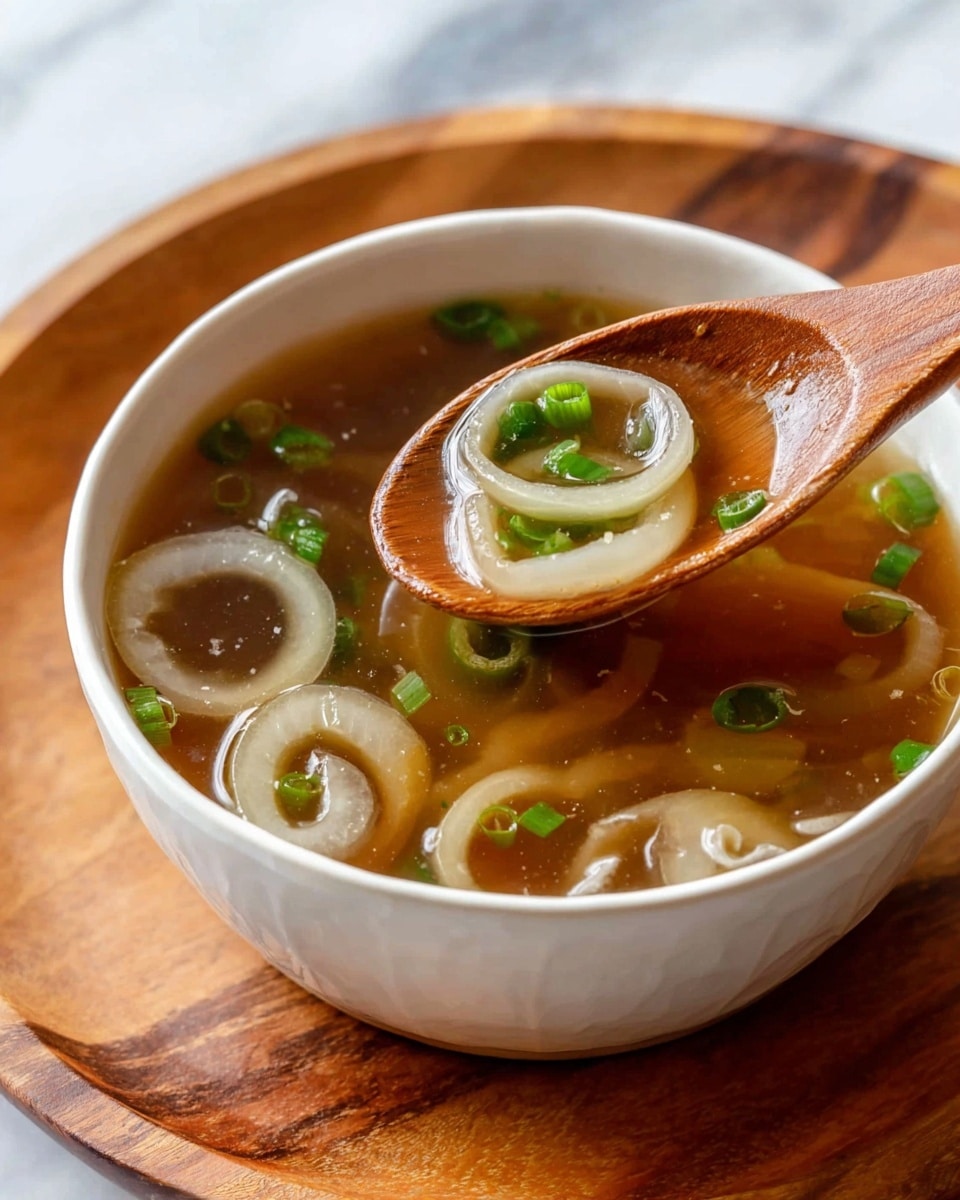
Garnishes
When serving, I love garnishing with freshly chopped green onions for that bright crunch. Sometimes I sprinkle toasted sesame seeds or a few sprigs of fresh cilantro or basil for an aromatic twist. A small drizzle of sriracha on top kicks things up just right if you enjoy a spicy touch.
Side Dishes
This soup pairs beautifully with a simple steamed rice bowl, lightly pickled vegetables, or a fresh cucumber salad. I often enjoy it alongside Japanese-style grilled tofu or a cold soba noodle salad for a balanced meal.
Creative Ways to Present
Once, I served this Japanese Onion Soup with Mushrooms and Seasonal Vegetables Recipe in beautiful sake cups at a casual dinner party—it was a big hit! Using small bowls or even edible bread bowls can elevate the experience and make your meal feel extra special.
Make Ahead and Storage
Storing Leftovers
Leftovers store really well in an airtight container in the fridge for up to 3 days. I always let the soup cool completely before refrigerating to keep the texture of the vegetables just right.
Freezing
I’ve frozen this soup successfully too. Just pour it into freezer-safe containers and thaw overnight in the fridge before reheating. Mushrooms can alter texture slightly when frozen, but the overall flavor remains delicious.
Reheating
Reheat gently on the stove over low to medium heat, stirring occasionally. Avoid boiling after reheating to keep the vegetables from getting mushy. If the soup tastes a little flat after reheating, a splash of rice vinegar or a pinch of salt freshens it up nicely.
FAQs
-
Can I use other types of mushrooms in this Japanese Onion Soup with Mushrooms and Seasonal Vegetables Recipe?
Absolutely! While button mushrooms work wonderfully, shiitake, cremini, or oyster mushrooms also add fantastic flavor and texture. Just slice them thinly so they cook evenly in the soup.
-
Is this soup vegan-friendly?
Yes! This recipe uses vegetable stock and plant-based ingredients only. Just make sure to use soy sauce or seasonings that are also vegan to keep it fully plant-based.
-
Can I make this soup ahead of time?
Definitely. In fact, it tastes even better the next day as the flavors have more time to develop. Just refrigerate it once cooled and reheat gently before serving.
-
What can I substitute if I don’t have rice vinegar?
If you don’t have rice vinegar, a mild apple cider vinegar or white wine vinegar works fine in a pinch, but use slightly less to avoid overpowering the delicate flavors.
Final Thoughts
This Japanese Onion Soup with Mushrooms and Seasonal Vegetables Recipe holds a special place in my kitchen rotation because it’s simple, adaptable, and always comforting. It’s the kind of soup you want to come home to after a busy day or share with friends on a chilly evening. Give it a try—I promise you’ll enjoy how the layers of flavor unfold with every spoonful. Trust me, once you make it, it’ll become a go-to comfort food in your home too!
Print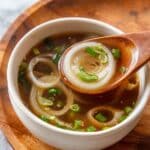
Japanese Onion Soup with Mushrooms and Seasonal Vegetables Recipe
- Prep Time: 10 mins
- Cook Time: 30 mins
- Total Time: 40 mins
- Yield: 6 servings
- Category: Soup
- Method: Stovetop
- Cuisine: Japanese
- Diet: Vegetarian
Description
This Japanese onion soup combines the sweetness of caramelized onions with the earthy flavor of mushrooms and a subtle tang from rice vinegar. Enhanced with ginger, garlic, and a hint of spice, this comforting vegetable broth is a healthy, flavorful dish perfect for any season.
Ingredients
Vegetables
- 2 cups finely chopped onions
- 1 cup peeled and diced carrots
- 1 cup diced celery stalks
- 1 cup thinly sliced button mushrooms
- 1 tablespoon minced garlic
- 1/2 teaspoon freshly grated ginger
- 1/2 cup chopped green onions (scallions)
Liquids and Oils
- 6 cups vegetable stock
- 1 teaspoon toasted sesame oil
- 1 tablespoon rice vinegar
- 1 teaspoon soy sauce (optional)
- 1 teaspoon sriracha sauce (optional)
Seasonings
- Sea salt, to taste
- Freshly ground black pepper, to taste
- 1/2 teaspoon crushed red pepper flakes
Instructions
- Prepare the Vegetables: Finely chop the onions to ensure faster caramelization, then peel and dice the carrots, and chop the celery into uniform pieces. Set each vegetable aside separately.
- Sauté the Onions: Heat toasted sesame oil in a large pot over medium heat. Add the chopped onions and cook gently, stirring occasionally, for about 10 minutes until they become translucent and start to sweat. Add minced garlic and grated ginger, stirring continuously to prevent burning and to build a fragrant base.
- Add Carrots and Celery: Incorporate the diced carrots and celery with the softened onions. Cook and stir for about five minutes until vegetables brighten in color and soften slightly, allowing their flavors to meld.
- Pour in Vegetable Stock: Add the 6 cups of vegetable stock to the pot. Bring the mixture to a gentle boil, being careful not to let it boil vigorously to preserve flavors.
- Add Mushrooms and Seasonings: Once boiling, add the sliced button mushrooms. Stir in rice vinegar, crushed red pepper flakes, soy sauce (if using), and adjust salt and pepper to taste. Mix thoroughly.
- Simmer the Soup: Reduce heat to low and let the soup simmer gently for about 20 minutes. This slow cooking allows the flavors to deepen and blend. Taste midway and adjust seasoning as needed.
- Finish with Green Onions and Serve: Just before serving, stir in the chopped green onions. Serve hot in bowls, optionally drizzled with sriracha sauce for a spicy kick.
Notes
- Use Quality Stock: Choose a good organic vegetable stock or make your own for the best flavor.
- Caramelize Slowly: Low and slow cooking of onions brings out their natural sweetness.
- Experiment with Umami: Consider adding a dash of miso paste to deepen the soup’s umami profile.
- Add Fresh Herbs: Finish with fresh herbs like cilantro or basil for an aromatic touch.
- Make It Ahead: This soup tastes even better the next day; store cooled soup in the fridge and reheat before serving.
Nutrition
- Serving Size: 1 cup
- Calories: 95
- Sugar: 6g
- Sodium: 480mg
- Fat: 2.5g
- Saturated Fat: 0.3g
- Unsaturated Fat: 2g
- Trans Fat: 0g
- Carbohydrates: 14g
- Fiber: 3g
- Protein: 3g
- Cholesterol: 0mg

